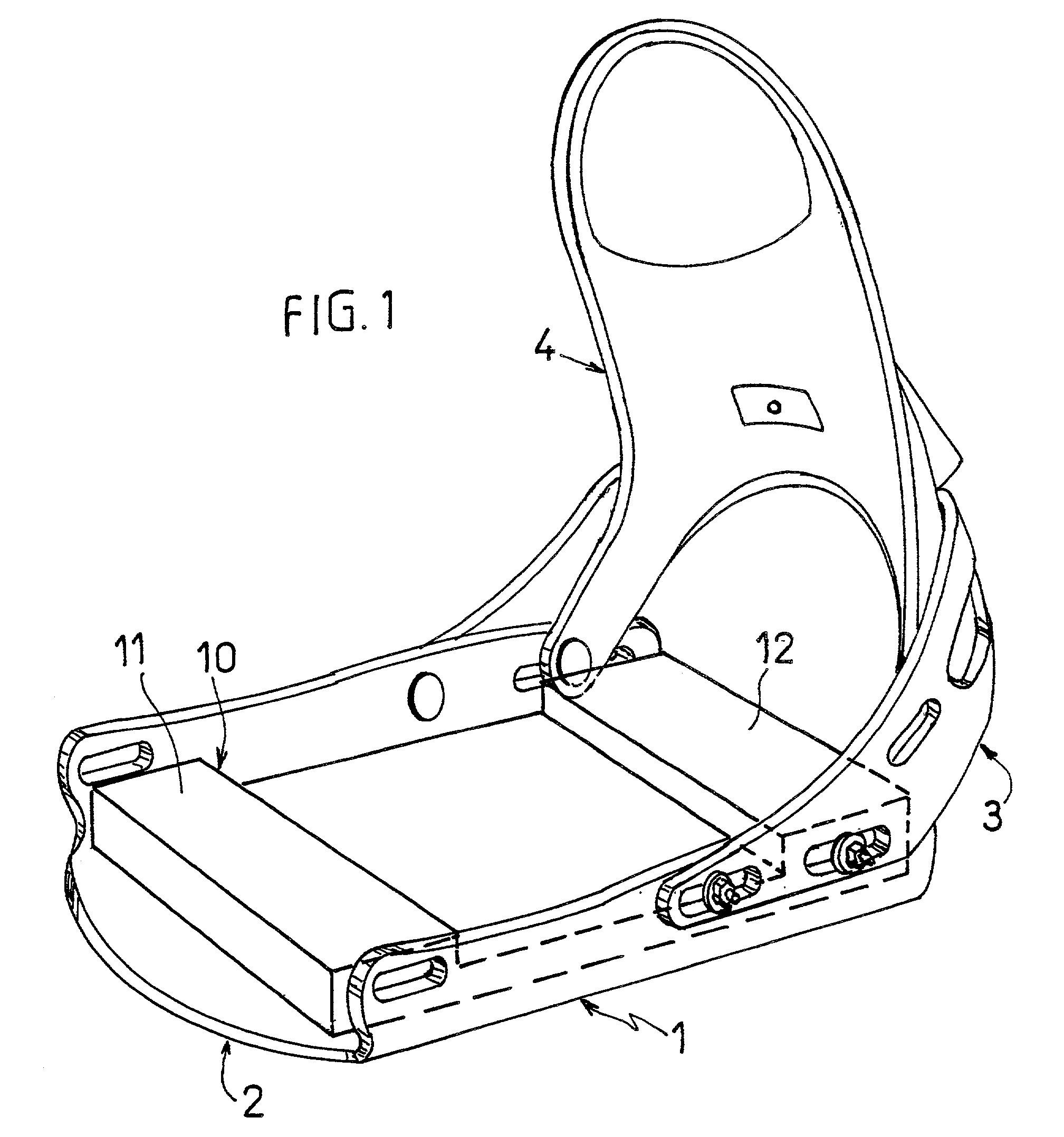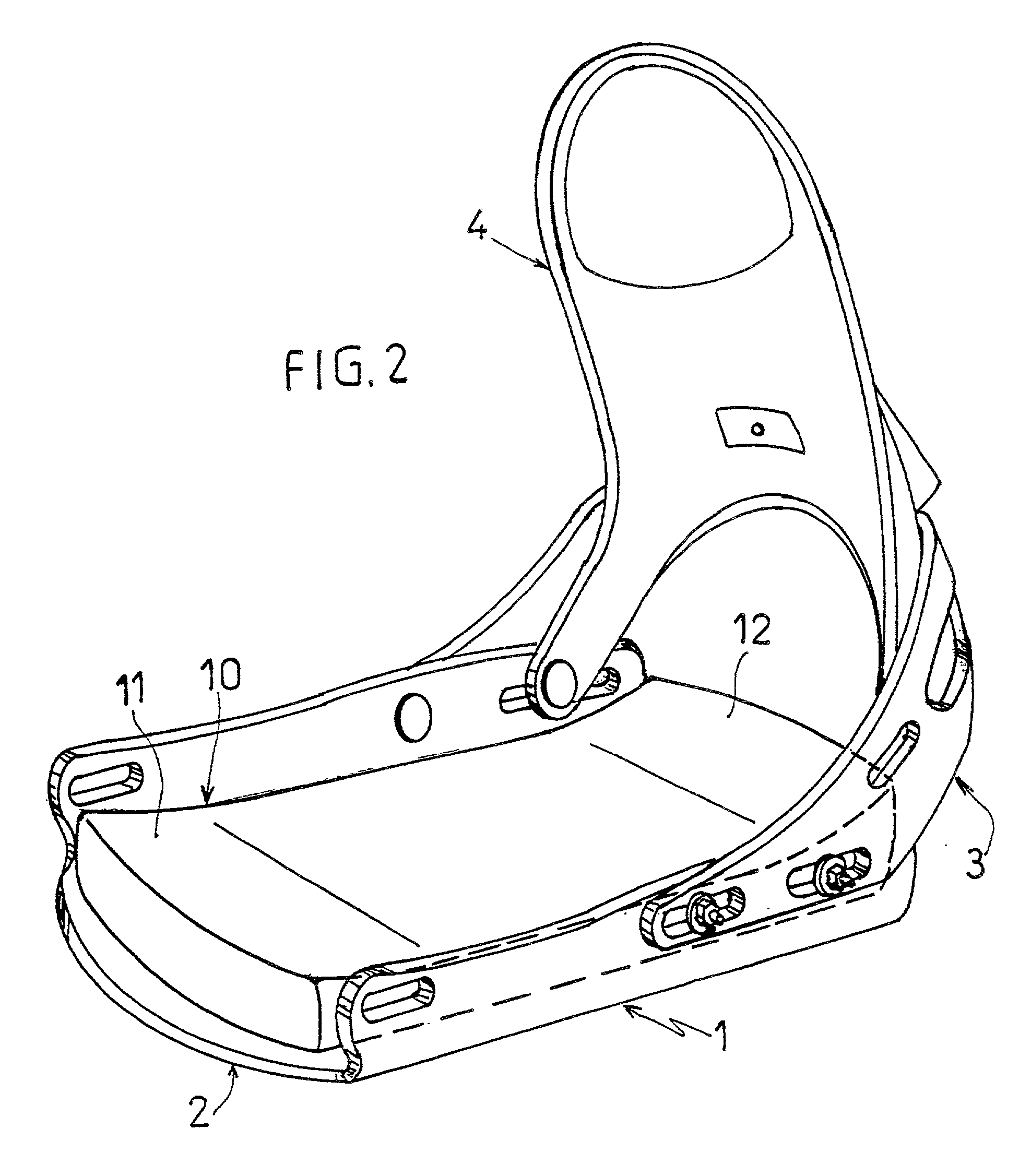Interface element used on a snowboard
a technology of interface elements and snowboards, applied in the direction of skis, skates, sports apparatus, etc., can solve the problems of inability to effectively transmit thrust, inaccuracy in feel and therefore in control of the board, and material that does not allow the user to transmit loads at the front and/or rear ends of the foot,
- Summary
- Abstract
- Description
- Claims
- Application Information
AI Technical Summary
Benefits of technology
Problems solved by technology
Method used
Image
Examples
Embodiment Construction
[0037] As already stated, the invention relates to an interface element intended to be fitted between the sole of the boot and the binding or the top side of the board, so as to compensate for the curvature of the sole of the boot.
[0038] As illustrated in FIG. 1, the characteristic element (10) can be fitted on the base (2) of the binding (1).
[0039] In the embodiment illustrated, this base (2) comprises a rear bow (3) passing behind the foot and holding an articulated highback (4) intended to act as rear support for the boot upper.
[0040] Obviously, the invention is not restricted to this single binding architecture and can be used in particular in so-called "baseless" bindings which have no actual base proper but just have two lateral members, the interface element then resting directly on the top side of the board (8).
[0041] In the same way, the invention is not restricted to the embodiment illustrated in FIG. 1 in which the interface element (10) extends over the entire surface of...
PUM
 Login to View More
Login to View More Abstract
Description
Claims
Application Information
 Login to View More
Login to View More - R&D
- Intellectual Property
- Life Sciences
- Materials
- Tech Scout
- Unparalleled Data Quality
- Higher Quality Content
- 60% Fewer Hallucinations
Browse by: Latest US Patents, China's latest patents, Technical Efficacy Thesaurus, Application Domain, Technology Topic, Popular Technical Reports.
© 2025 PatSnap. All rights reserved.Legal|Privacy policy|Modern Slavery Act Transparency Statement|Sitemap|About US| Contact US: help@patsnap.com



